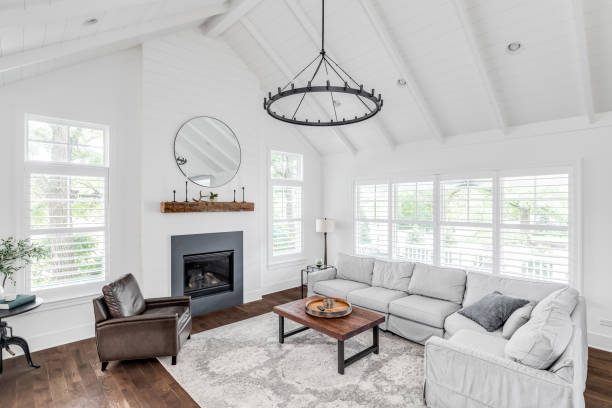A vertical garden, also known as a living wall or green wall, is an innovative and eco-friendly way to bring the beauty of nature into your home. Not only does it add an aesthetic appeal to your space but it can also improve air quality and reduce stress levels. If you’re considering installing one in your home, here are some tips that could help.
Firstly, decide on the location for your vertical garden. It should be a place that receives adequate sunlight since most plants thrive in well-lit conditions. However, if you’re planning on growing shade-loving plants like ferns or ivy, choose a location with less direct light. The chosen area should also have access to water for easy maintenance and watering of the plants.
Secondly, select the right type of plants based on the location’s lighting condition and climate. Succulents are great for sunny spots while ferns prefer shady areas. Herbs such as basil or mint can be grown indoors under artificial lights too. Also consider how much care each plant requires – some may need frequent watering while others may require minimal attention.
Next comes choosing the structure for your vertical garden installation. You could opt for DIY options like pallets or purchase ready-made ones from gardening stores. Ensure that it is sturdy enough to support the weight of all your plants when they’re fully grown plus any additional weight from watering them.
Before planting, make sure you install an appropriate irrigation system depending upon the size of your garden and types of plant species used in it because proper hydration is key to their survival and growth.
The next step involves setting up a suitable substrate or medium for plant growth which usually includes soil-less materials like coir peat or sphagnum moss which helps in retaining moisture without making it excessively damp thereby preventing root rot issues.
Now comes planting time! Start by placing larger plants at top as they would naturally grow taller than smaller ones providing them ample space to grow without hindrance. Make sure to space your plants appropriately to avoid overcrowding and ensure proper air circulation.
Lastly, remember that vertical gardens require regular maintenance just like traditional ones. This includes watering, pruning, fertilizing, and monitoring for pests or diseases. Regular care will keep your vertical garden lush and vibrant.
Installing a vertical garden at home can be a rewarding experience. It allows you to create an indoor oasis while also making the most of limited spaces. With these tips in mind, you’re well on your way to creating a beautiful living wall that adds life and color to your home.

